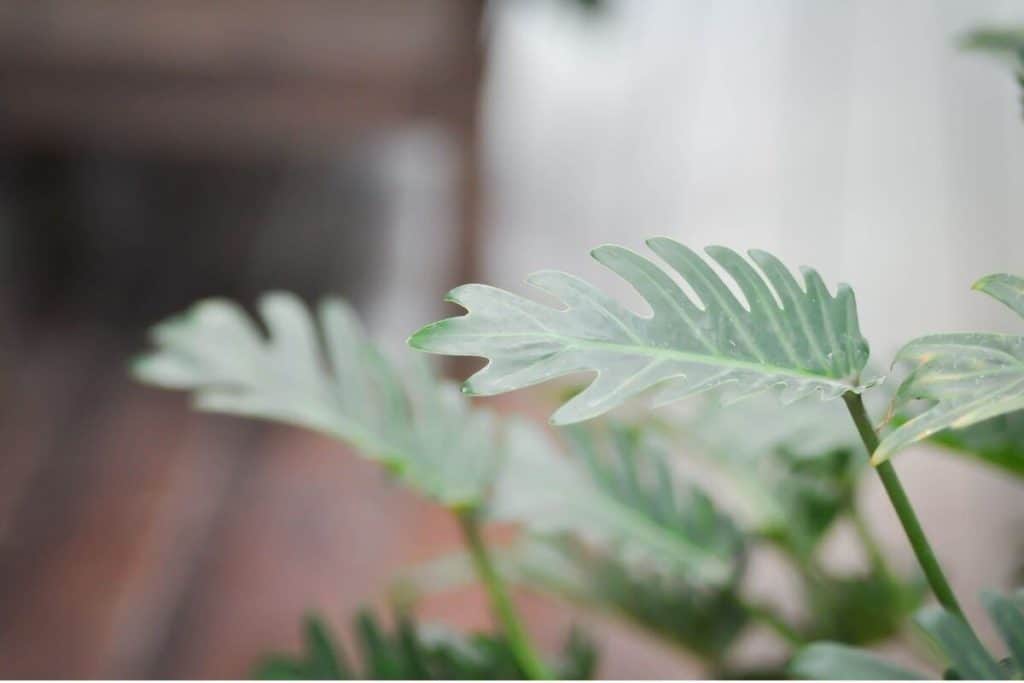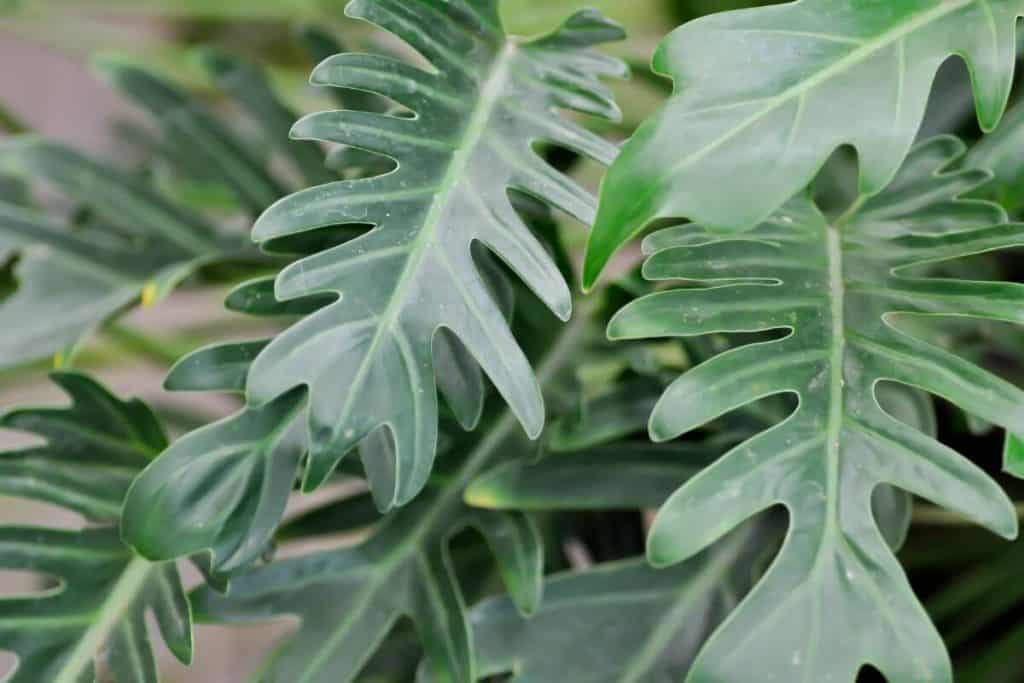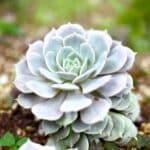If you’re looking for the best indoor plant that will add a touch of beauty to your home, we advise you think philodendrons! They are not only attractive for your home or office but are also easy maintenance plants.
Meanwhile, there are different varieties of philodendrons, including the Mayoi and Xanadu. How do Philodendron Mayoi vs Xanadu compare?
While they are from the same Araceae family, you can still draw out few differences from both, particularly from their coloring and shape.
For instance, the Mayoi has large, dark-green fern-like fringed leaves, whereas the Xanadu has a C-shaped canal along the petiole and has a deep purplish-red spathe.
Table of Contents
What is Philodendron Mayoi?
The philodendron mayoi originates from the Philodendron genus. It belongs to the Araceae family or Arum family, and according to the University of Connecticut, they are characterized by Spathe and Spadix. It was named in honor of aroid botanist Dr. Simon Mayo.
The Mayor is an indoor creeping philodendron that will grow best with some support where it can root as it grows and can easily be propagated.
It is a dark green tropical plant and is native to Brazil. We all know Philodendrons are house plants that are easy to keep and maintain, and the Philodendron mayoi is no exception here.
With proper Philodendron mayoi care, this is the simplest plant among all philodendrons. Therefore, you can grow it, cut it back, or take multiple cuttings.
Meanwhile, it should be given adequate care through regular watering during the summer months, approximately weekly, and in winter half as often. The same condition applies to fertilizing.
The plant should be re-potted yearly in spring into a generous yet not oversized pot to allow the root base to develop through the growing season.
Related Post: Difference Between Philodendron Cordatum and Hederaceum
What is Philodendron Xanadu?

The Philodendron Xanadu, also known as Thaumatophyllum Xanadu, is a perennial plant that belongs to the Arum family Araceae and the genus, classified initially under the Meconostigma subgenus of Philodendron.
It is native to Brazil as the Winterbourn Philodendron but was renamed Xanadu by houseplants of Australia in 1988.
A Xanadu plant can be grown indoors or outdoors. It can spread its toothed foliage wider rather than growing vertically, sometimes reaching widths of 5 feet, but it will not spread as much if kept indoors.
It is grown as a landscape plant in tropical, subtropical, and warmer parts like Florida, South Africa, Australia, etc.
Philodendron Mayoi Vs Xanadu
| Philodendron Mayoi | Philodendron Xanadu |
| It has large, dark-green fern-like fringed leaves. | It has a C-shaped canal on the petiole and a deep purplish-red spathe. |
| They are mostly regarded as climbers, creepers, or vines. | The upright plants, and not climbers or vines. |
| It May require occasional pruning to maintain its attractive shape. | Do not require pruning but is best removed by clipping them at the base of the stem. |
| It's a moderate to fast grower, hence the need for pruning. | Growth isn't as fast as the Mayoi; hence, pruning isn't required. |
Differences Between Philodendron Mayoi and Xanadu
As we earlier mentioned, there's nothing much to draw out as differences between the Mayoi and Xanadu.
However, they're not entirely similar, as the Mayoi has large, dark-green fern-like fringed leaves, whereas the Xanadu has a C-shaped canal along the petiole and has a deep purplish-red spathe.
Philodendron Mayoi grows more than 4 feet in an outdoor area, while those that grow indoors remain shorter because of the lesser space and intimate environment. But generally, it has a height of 0.5 to 0.8 feet as per production.
Meanwhile, for Philodendron Xanadu, it is best planted in containers filled with loosely packed commercial houseplant potting mix or 100% sphagnum peat moss that gives their root balls the freedom to grow and spread.
Here, plants that outgrow their original containers should be moved into a pot 2 to 3 inches larger.
Also, when Mayoi plants begin to mature, they slowly start enlarging and seeking poles to hold clips, which is why they are mostly regarded as climbers and creepers, whereas Xanadu is an upright plant, not a climber or vine.
Older Xanadu plants develop a short trunk that produces aerial roots sprawl along the soil surface, hence, well-suited as indoor plants.
Again, since the philodendron mayoi is a moderate to fast grower, it will require occasional pruning to maintain its tidy and attractive shape.
Although, not excessive and constant pruning. You can do this by using clean pair of pruning scissors to cut back damaged, diseased, infected, or leggy foliage.
On the other hand, the Xanadu philodendron does not need pruning. Dead or damaged leaves are best removed by clipping them at the base of the stem, where it meets the central part of the plant.
The best way to ensure that your plant maintains its attractive looks and bushy shape is to give it adequate light.
Related Post: Difference Between Brazil Pothos and Philodendron
How is Philodendron Mayoi and Xanadu Similar?

Well, you can draw out so many similarities between both the Mayoi and the Xanadu plants. For instance, both are attractive philodendrons that can be grown indoors.
They are also from the same Araceae family. Even though they can be grown outdoors, both cannot survive outdoors in cold climates or frost. They both thrive in tropical zones.
Both varieties are best when exposed to bright but indirect sunlight and will be happier near a bright window in which the sunlight never fully shines in their directions.
Again, both philodendrons are easy-maintenance plants and are prone to certain fungi and pests disasters.
For instance, certain fungi can cause leaf spots if left untreated and will result in leaf drop. To solve this problem, do not overwater and do not leave any water droplets on the leaves after watering.
Fungicide will treat the problem as well. Their soil must be moist but never be too dry or too wet.
What's Better About Philodendron Mayoi?
The philodendron mayoi is better when it grows in temperatures that are a bit similar to that of the rainforest. In other words, it thrives at a stable temperature of 60-80 degrees Fahrenheit (16-29 degrees Celsius).
Anything below 55degree Fahrenheit (12.5degree Celsius) will result in stunted growth, withering, or death. Occasional pruning is also essential.
What's Better About Philodendron Xanadu?
As far as the Philodendron Xanadu is concerned, the older it gets, the better it looks.
Older Xanadu specimens develop a short trunk that produces aerial roots sprawl along the soil surface, making it well-suited for shadier parts of the landscape.
Related Post: Golden Goddess Vs Philodendron Thai Sunrise




